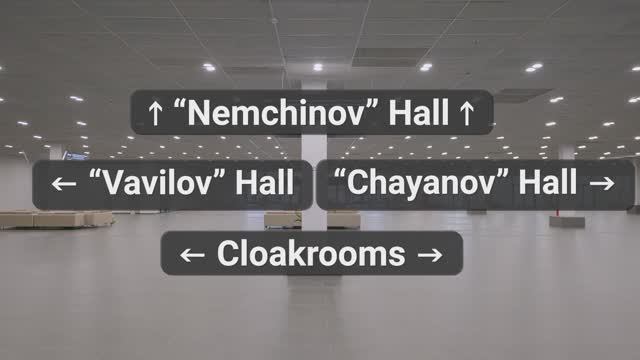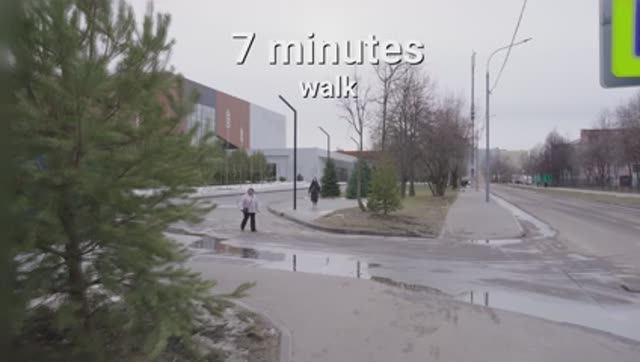Photonics 2014: Russia has a lot to offer
The Photonics. World of Lasers and Optics 2014 International Exhibition, held at Expocentre Fairgrounds from March 25 through 27, showcased the recent accomplishments, capabilities and prospects. Does Russia have a chance to be a leader of this industry?
Wrong impression and roadmaps
“Today there are no areas of human activity where we don’t lasers and photonics’, says Ivan Kovsh, the President of the Laser Association, which co-organizes the exhibition together with Expocentre. “The Russian showcase helps to change the wrong impression that there are no good researchers and engineers in Russia. It demonstrates unique products, which have no comparables in other countries.”
The Photonics. World of Lasers and Optics International Exhibition for Optical, Laser and Optoelectronic Technology runs every year at Expocentre Fairgrounds. To its 9th edition in 2014 the show brought together 160 companies from 12 countries. The visitors had a great opportunity to compare developments and products from Russia and such countries as Denmark, France, Germany, the Netherlands, the USA, etc. Participation of the world’s leaders confirms the event’s international significance. Some of the companies which demonstrated their products were Ohara GmbH, Ocean Optics, Limo Lissotschenko Mikrooptik, Trumpf Laser, Altechna UAB, Leybold Optics (Buhler AG), Hamamatsu Photonics, Cutting Edge Coatings Gmbh, and others.
Manufacturers from China and Germany presented their developments in their national pavilions. Germany alone brought 23 companies, all of which were leaders of the industry. Russian exhibitors included Schwabe, Roselectronics, Azimut Photonics, Photonics NPK, Uran, Optosystems, and may others. Deputy Head of the Science, Industrial Policy and Entrepreneurship Dmitry Knyazev noted that participation of Moscow small and medium enterprises was supported by the Moscow City Government.
Over three days of the exhibition, eleven conferences were held to discuss prospects of photonics in various sectors of economy. The first meeting of participants in working groups of the Photonics Technology Platform with representatives of the Russian Venture Company and the Russian National Union of Business Angels took place. In conclusion of the programme, the results of the annual competition of the Laser Association for the best Russian developments in the field of photonics were announced.
The exhibition acquired a special significance when the Russian Government adopted the road map for photonics development in Russia. At the exhibition opening ceremony Deputy Department Director of the Russian Ministry of Industry and Trade Dmitry Kapranov talked about the government’s efforts to bring it to life. Today the Ministry, as a main coordinator and executor of the road map, develops a series of measures to boost the industry’s growth. The Photonics Technology Platform, which unites 160 laser and photonics organizations, plays the most active part in it, says Ivan Kovsh.
The latest technologies, including photonic and laser ones, will be supported by new laws. The State Duma is working on a draft law on industrial policy. This information was provided by Deputy Chairman of the State Duma Committee on Industry Pavel Dorokhin.
Achievements, prospects and opportunities
The exhibits are used in medicine, instrument making, agriculture, machine building, navigation, geodesy, IT and energy industry. Visitors can see both small tools for everyday needs (e.g. labeling of goods, making various signs, plates and stamps) and large machinery for all types of enterprises.
Not so long ago, opportunities that we have now thanks to developments demonstrated at Photonics were something we read in sci-fi books. Scientists and researchers believe that there is no limit to their discoveries if the government treats the science not only as an instrument for a here-and-now profit but also as a tool for strategic solutions.
For example, the Troitsk Institute of Innovative and Thermo-Nuclear Research (TRINITI State Research Center) survives now only thanks to several research programmes left after the collapse of the 1990s. One of the sources of its poor funding is cooperation with resource extraction companies such as Gazprom. This company commissioned the institute to develop and build a transportable laser technological unit (MLTK-20) on the basis of its own know-how and using highly efficient fiber lasers, developed under the supervision of well-known Russian physicist Valentin Gapontsev and manufactured by NTO IRE-Plus from Fryazino. This unit can be brought to any place using any mode of transportation (road, water or air) and be assembled very quickly. First of all it is very useful to mitigate emergencies. Unfortunately now it becomes more and more relevant. MLTK-20 already proved to be very effective in 2011 during an accident at a gas field in Yamalo-Nenets Autonomous Okrug. It travelled 5,000 km on not very good Russian roads to be assembled immediately after arrival. With its help the damaged drill rig in the centre of a gigantic gas flare was cut into pieces from the distance of 70 m. The gas spout was localized. As a result it took only four days instead of several weeks to extinguish the gas flare. No doubt it substantially reduced losses. According to First Deputy Director of the Advanced Research Department Aleksandr Krasyukov, MLTK-20 costs 150 mln rubles, and, for comparison, the cost of gas burned within one day of such an emergency is about one million USD. Such transportable units can also be used to treat contaminated surface. One more development of TRINITI is a method of timely detection of oil waste and its prompt elimination. Today that we start exploiting the Arctic shelf it is especially important.
Unfortunately, the institute has stopped its research in other not less promising fields; for instance the research on using MHD generators in geologic exploration. As researcher of the Advanced Research Division Vladimir Dubrovsky explains mobile units with MHD generators allow seeing the structure of deposits on the area of up to one sq km. We could use such units now as the majority of this country’s active deposits were discovered in the Soviet times.
The showcased exhibits are a testament to great achievements and potential of Russian researchers. However, not only finances are required to bring this potential to life but also a clear and consistent political will. The Photonics exhibition managed to draw attention of the government. Hopefully, others will be as lucky.
http://kapital-rus.ru/articles/article/246693


